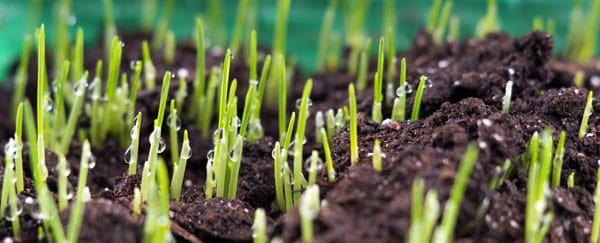
Like all plants, your turfgrass has a life cycle. This life cycle depends on what type of grass you have and your local climate. Perennial grasses are the most commonly seen in lawns and can live for many years, but they still need proper care throughout each stage in their life cycle. Juvenile and preestablished lawns will need more care and maintenance than your older turf, read on to find out where your lawn is in its life cycle and how to properly care for it!
GERMINATING
Each seed contains nutrients that they need to germinate and being growing. Watering and fertilizing is key during this time to encourage healthy growth. This stage begins from day one and can last for 7 days to a month.
JUVENILE
As your turfs roots develop and spread it is important to ensure your soil has well balanced nutrients to fuel stable and even growth, and keep your turf healthy. You will see your lawn begin to sprout little leaves and roots all over your soil.
ADOLESCENCE
This is where your lawn will begin to thicken up and look like a real turf. Your grass begins to focus on growing leaves, using a nitrogen rich fertiliser will help your turf produce a lush, green colour.
MATURITY
Your turf has reached maturity and will begin sewing seeds, depending on the type of lawn this could be anywhere from 1-10 years after planting seeds. Phosphorus is important at the beginning of your lawns reproductive cycle, fertilizing will ensure your plants has the right nutrients to sew healthy seeds.